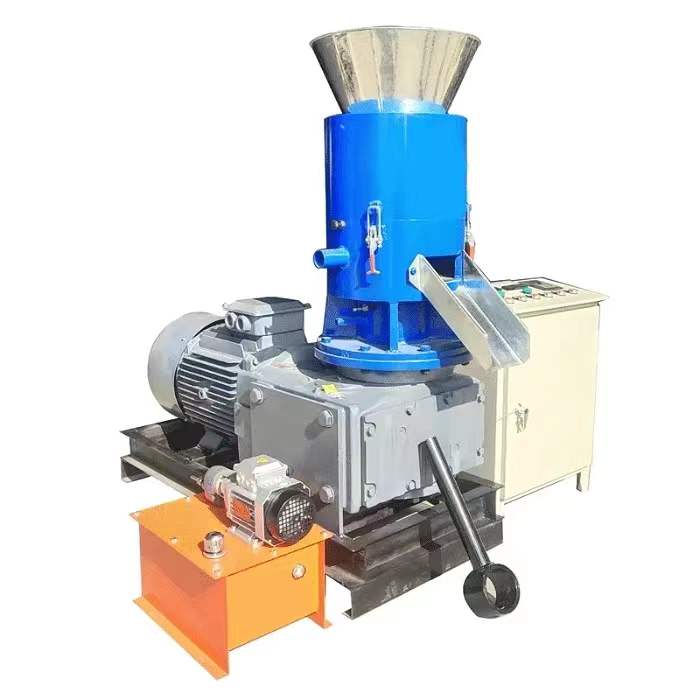
Introduction and market prospects of biomass pellets
Biomass pellets are a type of fuel made from renewable biomass materials that are widely used in the energy industry. The production and use of biomass pellets can provide sustainable energy, It can also reduce dependence on traditional fossil fuels and have a positive impact on environmental protection.
Biomass pellets application scenarios
Biomass pellets are mainly used in heating, power generation and industrial fields. In terms of heating, biomass pellets can replace traditional fuels such as coal and natural gas for use in boilers and heating systems. In terms of power generation, the high calorific value and low carbon emissions of biomass pellets make it a clean energy choice, especially suitable for the power generation industry dominated by renewable energy.
In addition, some industrial fields use biomass pellets as fuel, reducing the demand for fossil energy and reducing emissions to the environment.
Biomass pellet uses:
- Feed for livestock in large-scale breeding farms, easy to store and transport;
- Civilian heating and living energy, clean, pollution-free, easy to store and transport;
- Industrial boiler and kiln fuel, replacing coal and gas, solving environmental pollution;
- It can be used as fuel for gasification power generation and thermal power generation to solve the problem of shutdown of small thermal power plants.
Introduction Of biomass pellet machine
Everyone knows that the biomass pellet machine is a kind of biomass energy pretreatment equipment. It mainly uses agricultural and forestry processing waste such as wood chips, straw, rice husks, bark and other biomass as raw materials. Through pretreatment and processing.
Solidify and shape it into high-density pellet fuel. Biomass pellet machines are divided into flat-die biomass pellet machines and ring-die biomass pellet machines.


Ring Die:
Ring die pellet machine is the more common and commonly used type of pellet machine. Its mold structure is an annular shape with multiple pressure wheel grooves and holes inside. The raw materials are pressed into particles through the pressure wheel inside the mold.
Ring die pellet machine is suitable for large-scale production and has the following advantages:
- (1) High productivity: Due to the structure of the ring die, multiple particles can be produced per revolution, so the production efficiency is high.
- (2) Applicable to a variety of materials: The ring die is suitable for more complex pellet production and can be used to process feed raw materials of different types and ingredients.
- (3) The quality of the particles is better: Due to the greater pressure and heat during the pressing process, the density and hardness of the particles are higher and the quality is better.
Flat Die:
The mold structure of the flat die pellet machine is flat, and the pellets are made by pressing the raw materials. Compared with the ring die, the flat die pellet machine is suitable for small-scale production and home use and has the following advantages:
- (1) Easy to clean and maintain: The flat mold structure is relatively simple and easy to disassemble and clean.
- (2) Suitable for small-volume production: suitable for small-scale feedlots or personal use, and does not require large-scale production equipment.
- (3) Suitable for some special raw materials: For some special raw materials, such as wood chips, straw, etc., the flat-die pellet machine may be more suitable for processing.
What is the difference between these two feed pellet machines?
I want to buy a feed pellet machine, how should I choose? I think many friends have asked similar questions. Today I will take one minute to answer them clearly for you.
First of all, the feeding method is different. The ring die pellet machine is prone to uneven feeding when the machine is in a rotating state. When feeding the flat die granulator, the raw materials are uniform.
Secondly, the discharging method is different. The discharging of the ring die pellet machine is also at a high transfer speed, and the material is easily damaged when discharged. The flat mold has a low speed and the material is not easily damaged.
Then, the ring die granulator has uneven pressure during use, while the flat die granulator has uniform pressure. It can be adjusted in two ways: rotary manual and hydraulic automatic adjustment.
Then, the output of a flat-die pellet machine is lower, and the hardness of the pressed feed is suitable for animals to absorb. If you need the output, it is more suitable to buy a flat-die pellet machine.
Ring-die pellet machines have high output. For example, the 560-type equipment has an output of about 1 ton per hour and produces pellets with high hardness. The production cost of the equipment is higher than that of flat molds.
To sum up, they are different. Don’t get confused when buying. You should choose according to your own needs. Choosing a ring or flat die depends on your specific needs and budget.
If you need large-scale, high-capacity production that is suitable for a variety of materials and has high particle quality requirements,
A ring die pellet mill may be more suitable. And if you only need to process a small amount of raw materials, or have a limited budget, a flat die pellet machine can be a more reasonable choice.
